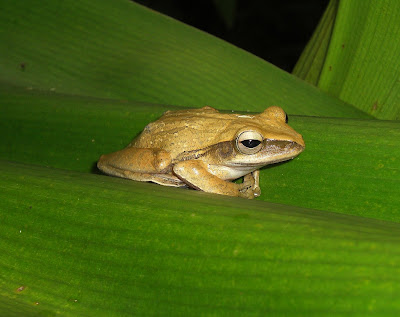Ever kept any exotic pets like insects or other creepy crawlies? Due to our dragonfly project at school, I was given five dragonfly nymphs to take care of. They were very tiny, about 2 centimetres in length. I brought them home to take a few snaps. Here's the biggest one in the group.
-
-
It may be rather difficult to spot them as these nymphs were caught from our school pond's filter, and the filtered substance is also in the container so as the nymphs feel safe. I had a hard time photographing these tiny nymphs as they would always dig into the substrate once they were exposed. Hence most of my pictures here may not be very clear. Here's two of them together in a single shot. Notice their colour differences. The brown one is older than the yellowish-green one.
-
-
I soon moved two of the small ones into two different containers. One container held the water from our school pond, and the other contained the water from our school's Constructed Treatment Wetland. Here's the nymph from the pond water.
-
-
A few days after I first brough them, the nymph in the tank with the water from our school's CTW actually moulted and became a light green. This showed that the living conditions in the tank were suitable for the nymph to live in. Here's a shot of the newly emerged Dragonfly Nymph.
-
-
To add more life into the water, I placed some tiny water snails and some tadpoles into the water. The water snails were collected from the pond and the tadpoles from the CTW. Although I feed the dragonfly nymphs tubifex worms, I could observe and see if the nymphs attempt to catch and feed on the snails or tadpoles. Here are few shots of the snails.
-
-
-
And here's one of the tadpole.
-
-
And sometimes, these creatures may get together for a small talk. Well, by now you should have noticed that the environment in the tank is somwhat similar to that of a mangrove habitat when high tide. This allows the nymphs to climb up the twigs when it is time for them to emerge as an adult dragonfly.
-


















































